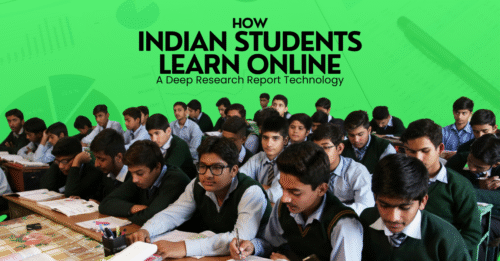For years, India’s digital revolution was centered in urban hubs—metros like Mumbai, Delhi, and Bangalore. But a quiet transformation is now sweeping through small towns and remote districts across India. Welcome to Tier-3 India: the new digital growth engine of the country.
This surge isn’t loud, but it’s powerful. It’s not just about people scrolling social media—it’s about a billion new dreams powered by mobile screens, regional content, UPI payments, and affordable data. In this blog, we dive into how Tier-3 India is redefining the digital economy and why every brand, startup, and policymaker should pay attention.
Who Are the Next Digital Billion?
The “next digital billion” refers to Indians who are getting connected to the internet for the first time—mostly from rural and Tier-3 towns. These are people who may have never owned a PC but now own a smartphone. They’re watching videos, running businesses through WhatsApp, accessing online education, and shopping via voice search.
What sets them apart:
Mobile-first or even mobile-only users
Prefer vernacular languages
Value trust and simplicity over flash
Rely on word-of-mouth or WhatsApp forwards for discovery
Why Tier-3 Is Leading the Surge
Tier-3 towns—places like Chhindwara, Satna, Bhagalpur, and Durgapur—have seen explosive growth in mobile usage and digital engagement. Let’s explore the key drivers:
1. Cheap Data, Powerful Devices
Thanks to affordable smartphones and low-cost internet from Jio and other telecom giants, Tier-3 users are coming online in large numbers. What was once a luxury is now a necessity.
2. UPI & Digital Payments
India’s UPI system has removed the need for physical banks in small towns. Now, even a vegetable vendor in Hazaribagh accepts digital payments. UPI transactions in Tier-2 and Tier-3 cities have jumped significantly over the last two years.
3. Regional Content Explosion
Apps like ShareChat, Moj, Josh, and YouTube have capitalized on the demand for regional language content. In fact, 9 out of 10 new internet users in India prefer content in their native language.
4. EdTech & Skilling
Platforms like PhysicsWallah and Apna are helping Tier-3 youth prepare for competitive exams, gain job skills, and even get jobs directly via mobile apps.
Data Snapshot: Digital Adoption in Tier-3 India
| Metric | Growth in Tier-3 Cities |
|---|---|
| Smartphone penetration | 65%+ increase since 2020 |
| UPI transactions | 120% YoY rise in 2024 |
| Vernacular content consumption | 3x faster than metros |
| Voice search usage | 2.5x higher than metros |
| Online job/app-based hiring | 4x increase via mobile |
Challenges That Remain
While the growth is inspiring, Tier-3 India also presents unique challenges:
Digital literacy gaps: Many users are first-time internet users
Language barriers: Most digital products are still designed in English
Trust issues: Online scams have made people cautious
Infrastructure: Some areas still lack stable 4G/5G connectivity
Solving these challenges means thinking differently—not just “translating” platforms into Hindi or Tamil, but truly designing for the needs of these users.
How Brands and Startups Can Win in Tier-3 India
This isn’t just a trend—it’s a business opportunity. Here’s how companies can tap into this booming market:
1. Go Vernacular, Not Just Local
Think beyond Hindi. India speaks over 22 languages. Brands that invest in high-quality, localized experiences will gain loyalty.
2. Voice & Video First
For many Tier-3 users, typing is hard. Voice search and video guides simplify interactions. AI tools that recognize regional dialects will thrive.
3. Build for Trust
Emphasize safety, easy returns, and human support. Trust is more valuable than speed or discounts in these markets.
4. Influencers Beyond Instagram
Tier-3 trust local creators, teachers, and community WhatsApp admins more than verified influencers. Micro and nano influencers in small towns are powerful.
5. Serve Needs, Not Trends
Don’t push flashy features. Solve real problems: farming updates, government schemes, affordable education, healthcare access, and small business support.
Government & Policy Role
India’s Digital India initiative and PM-WANI Wi-Fi scheme are steps in the right direction, but more needs to be done:
Digital skill training in local languages
Better infrastructure in underserved districts
Affordable credit and digital tools for small businesses
If these efforts are scaled up, Tier-3 India could be the biggest driver of GDP growth in the next decade.
Conclusion: The Future Is Already Here
The next wave of digital India won’t come from high-tech hubs—it’s already growing silently in Tier-3 India. It’s a future where a farmer sells produce via WhatsApp, a student clears NEET via an app, and a homemaker starts a YouTube channel in Bhojpuri.
To win in India, you must understand Bharat. And Bharat is mobile, vocal, and digital—on its own terms.







